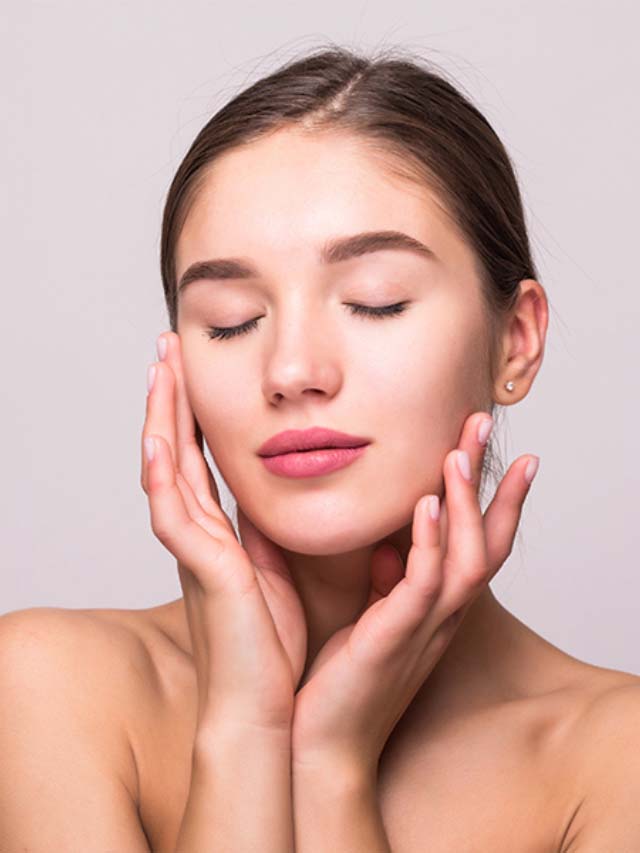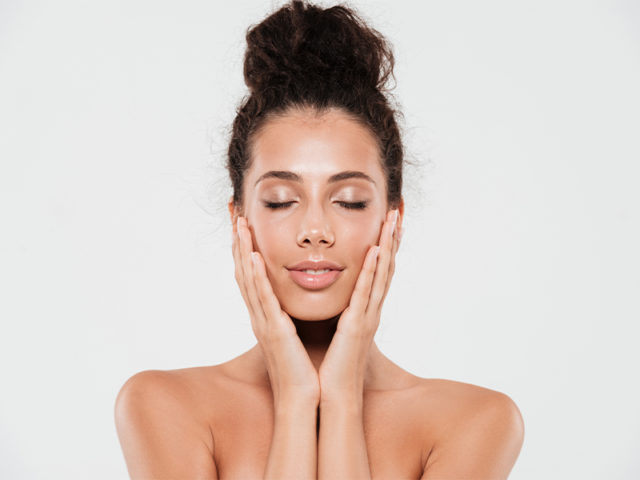Usually, 3-4 days before your periods, you have a friendly guest on your skin. That friendly guest AKA pimple arrives on your skin as a painful and constant reminder, ruining your healthy texture. Apart from that, your skin also looks dull, dry and tired during your cycle. Over the years, most women have gotten used to this change. But how can you ensure healthy skin despite erupting acne?
To learn more about period skin TC46 consulted with Dr Smriti Naswa Singh, Consultant Dermatologist & Cosmetic Dermatologist, Fortis Hospital, Mumbai. Here she explains the changes in one’s skin and steps to have healthier skin.
1. Woman’s skin changes during her menstruation cycle
A female undergoes hormonal changes throughout the menstrual cycle.
Estrogen: In the first half of the cycle (before ovulation, day 14 in a 28-day menstrual cycle), estrogen is the main hormone. Estrogen is the wonder hormone for women responsible for the tensile strength of collagen, the elasticity of elastin, and the moisture-retaining capacity of hyaluronic acid. So, in the first half of the cycle, a woman’s skin looks plump, radiant, and tight (no sagging, no loose skin, less or no wrinkles).
Progesterone: This is the hormone released post ovulation (from day 14 onwards). Progesterone activates sebaceous glands. This is also the reason why progesterone-only pills are taken for 5-10 days to delay periods and it leads to a sudden spurt of acne in ladies. The active sebaceous glands lead to open pores, acne bouts, dandruff, seborrhea, overall oily shiny face skin. This can also lead to acne-like eruptions in the V-area of the neck and back, shoulders and arms.
Testosterone: This hormone remains constant throughout the cycle. When during the periods (day 1 to day 6), the estrogen and progesterone levels dip, testosterone gets a chance to manifest itself. It leads to dry, lacklustre skin as well as oily skin with bouts of painful acne, due to activation of sebaceous glands.
2. Skin issues that arise during one’s cycle
Through the cycle, the skin reacts in different ways.
- DAY 1-6 of the menstrual cycle, one can get dry skin that is dull and lusterless accompanied with bouts of painful acne. Also, the increase in prostaglandins leads to inflammation and hence sensitive skin with increased pain sensitivity. In terms of cystic acne which is grade 4 acne, it cannot be dealt with creams or home remedies or DIY alone. They should be treated by a dermatologist otherwise if left untreated, they can leave scars
- DAY 7-14/16 the skin starts looking plump, fresh and with youthful radiance. This effect peaks around 12-16 days (ovulation time) when estrogen levels peak and pores become small, skin is very well hydrated
- DAY 17-24 the skin pores shrink (due to swelling of the face) but clogged acne pores lead to comedone generation, acne formation and increased oiliness
- DAY 25-28 is the time of Premenstrual Syndrome (PMS). This is when as they say all hell breaks loose. There is bloating, puffiness, large pores, hormonal acne spurt (on the lower area of the face near jawline and chin) and the acne become laden with pus
3. Skincare routine & tips during the menstrual cycle
- Pre-period time is around day 25-28 (in a 28day menstrual cycle). Around this time the progesterone levels are high and PMS symptoms are also peaking. A salicylic acid-based face wash (ranging from 1-2%) can be added in the daily routine with a non-comedogenic sunscreen and moisturiser in CTS/ CTM routine (Cleansing-Toning-Sunscreen/Moisturiser; toning is good for open pores and if a person regularly uses makeup)
- During periods, the skin is very dry and sensitive and with a low pain threshold. At this time sulphate free, oily skin cleanser that is devoid of Alpha or Beta Hydroxy acids (like glycolic and salicylic acid) and instead incorporating products like tea tree oil can be a good choice. A good moisturising routine with non-comedogenic moisturising cream or serum containing hyaluronic acid is a good idea
- Post-periods, usually day 6 till ovulation, a lady is relatively clear of acne. From day 17-24, doing a good CTM regime as per one’s own skin (a Dermatologist’s opinion can be taken to help tailor-make the regime), and adding a clay mask can help the skin and control oiliness
4. A moisturiser to reduce the redness and increased sensitivity
Moisturiser is the best friend of skin. Here are a few points that can help:
- Hydrate yourself well with 2-3 litres of water
- Moisturise with a non-comedogenic moisturiser every time you wash your face
- Sunscreens are usually good moisturisers, hence a moisturiser on top of sunscreen is usually not required
- Activities like waxing, scrubbing, peels or derma roller procedures should be shifted to post day 6 of the menstrual cycle when the pain threshold is better and skin is much more hydrated and supple
5. Acne scars take time to heal
Treating a single pimple takes me 5-6 days, for treating dark spots left by pimples needs 2-3 months, and treating a scar is not possible. A scar can be revised but cannot be removed. A dermatologist can give you scar improvement to the tune of 70-80% (and that is a beautiful improvement with high patient satisfaction) but if it is possible, nip the problem in the bud and treat it at the level of acne/pimple itself. To reduce or prevent acne scarring, one must start the above-mentioned cleansing moisturising routine, and treat acne with acne creams (prescribed by a dermatologist) or try products containing tea tree oil, sandalwood, earthen clay. But if the DIY is not working, the thumb rule is to go to the nearest clinic early.
6. Lifestyle tips to follow for better period skin
All acne is under the control of hormones. Some hormonal changes are natural to a lady’s monthly cycles, and the age of pimples is usually 15-35 years (from puberty till the 30s). Such acne is on the mid cheeks, forehead, nose and sometimes on the chin. They can be tackled if a person maintains a healthy lifestyle of eating a clean diet, regular exercising with cardio as well as strength training, regular sleep cycle maintaining circadian rhythm (be awake in the daytime, preferably wake up before or with sunrise and sleep at night by 10 pm) and keeping mental stress at bay by various techniques like inculcating in a hobby, spending time with family and friends, spending time with nature or meditation.
Hormonal acne on the other hand starts after 30 years with a classic description of ‘I never had acne in my teenage’, acne in the lower half of face along jawline and neck too, painful big pimples, with added signs of hormonal imbalance like increased weight, big abdominal girth, Acanthosis Nigricans (thick dark line around neck, dark armpits and dark thighs), Hirsutism (thinning hair along the middle parting). Such acne is a sign of underlying wrong lifestyle choices. Choices that can be made to correct this:
1. Diet
- Eat a clean diet with foods in as natural form as possible
- Make 50% of your daily foods raw
- Have 2-3 fruits daily, preferably as first thing in morning/ breakfast
- Have a rainbow-coloured salad with 4-5 different coloured vegetables before lunch and dinner
- Zero packaged foods
- Zero refined foods like maida, refined sugar, white rice, and refined oil
- Include a variety of grains – millets
- Decrease dependence on dairy and prefer desi cow ghee and curd/ buttermilk as dairy sources over-processed cheese, milk, and paneer
- Have good fats in natural form like nuts, seeds, peanuts, coconut and fish
- Keep meat intake limited to 2-3 times a week and cook at home using traditional methods prevalent in your region or as taught by your parents
2. Exercise regularly
- Include cardio and strength training 2.5-3 hours a week
- Sitting is the new smoking
- Walking is a good activity, but it is an insufficient exercise
If walking, try to walk 250 steps an hour and 10000 steps a day!










